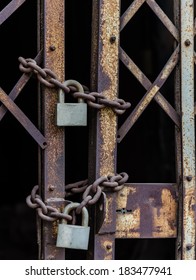 |
| St Thomas before Vatican II changes |
This week’s history comes from the “Diocese of Portsmouth: Past and Present” by Gerard Dwyer published in 1981, and looks at the history of Catholics in Jersey after the Reformation to the early 1980s.
The Channel Islands in Diocese of Portsmouth – Part 2
Jersey
It would seem that between the English and French
Revolutions the Catholic religion was non-existent in the Islands. The
extinction of Catholicism at the Reformation produced no Catholic martyr; but
its revival at the end of the eighteenth century in France produced one in the
person of Matthew de Gruchy. He was born in Jersey in 1761. As a young man he
ran away to sea, joined the navy, took part in the war against France, was
captured by the French and imprisoned.
At Angers Matthew was used as an interpreter in the hospital
where there were many English prisoners. Some of these were Catholics (many
Irish used to join the army or navy), and the local Bishop sent an Irish
priest, Fr. Drady, to look after the Catholics. Fr. Drady instructed Matthew in
the Faith and received him into the Church on 23rd July 1780. In June 1782
peace was signed and de Gruchy became a free man. A local parish priest took an
interest in him and eventually had him accepted by the Bishop of Lucon as a
candidate for the priesthood. He was ordained on Easter Eve 1788.
The following year the French Revolution began with the fall
of the Bastille. In 1792 all priests who refused to take the Oath laid down by
the "Civil Constitution of the Clergy" were ordered to leave the
country. Great numbers went to England and to the Channel Islands. In Jersey
there were three Bishops and 3,000 priests. Matthew decided to go home. When
his relations discovered that he was a Catholic priest they were horrified, and
he had to leave the Island.
After a visit to London he returned to Jersey. He was
called-up to join the Militia; he refused to bear arms and was again exiled. He
returned home once again, but the States of Jersey, under the influence of the
Anglican Rectors, made his stay impossible. In February 1795 we find him in
Southampton working among the French prisoners-of-war and 30 Irish soldiers who
were in hospital.
When La Vendee rose against the revolutionaries, Matthew
decided to go there. For two years he lived in terrible conditions, hunted by
the soldiery with a price on his head. In 1797 he was arrested in Nantes and
condemned to death. We possess his last letter to his mother, written in the
Bouffay Prison at Nantes: "... I offer Him the sacrifice of my life. I ask
Him to accept it as a reparation for my sins and that He may be pleased in his
mercy to grant you also, to my sisters and whole family, the grace of conversion
“Next day he was shot. The first volley did not hit him; neither did the second:
so they put a rifle to his head and blew out his brains. His name is among the 125
martyrs whose beatification has been petitioned for at Rome by the Diocese of Nantes.
Catholicism makes a comeback in Jersey - St. Thomas's
Between 1790 and 1793 great numbers of French émigrés, both
priests and laity, poured into Jersey. Almost overnight the town of St. Helier
doubled its size. The Governor gave permission for the opening of four chapels
for private worship St. Malo with Fr. John Le Saout, St. Louis with Fr. Peter
Derbree, Our Lady with Fr. Le Roussel de Vaucelles, and the Sacred Heart with
Fr. de la Chateigneraye.
As well as the French emigrants there were also some Irish
soldiers garrisoned on the Island. They too were given permission to attend
Mass in these chapels. From these two sources- French émigrés and Irish
immigrants - came the revival of Catholicism in the Island.
Gradually the émigrés returned to France and the four Mass
centres were closed. In September 1803 an old flour loft was rented in Castle
Street, access being gained by means of a ladder. This new Catholic chapel was
known as "Les Mielles" and was dedicated to St. Louis. The first
priest in charge was a Fr. Philibert. He was succeeded in 1807 by Fr. Charles
de Grimouville (who, as we saw above, was also appointed Vicar General for the
Islands) who died in 1817 having been named Bishop-Elect of St. Malo.
The Mission continued to be served by French priests: Fr.' Le
Guedois from 1822 to 1836 and then, after a lapse of nine months when there were
no priests, Fr. Morlais. In 1842 Fr. Morlais bought an Anabaptist chapel in New
Street which he dedicated to St. Thomas the Apostle in memory of Bishop
Griffiths, the Vicar Apostolic of the London District, who had helped so much
in its foundation.
After 23 years of hard work Fr. Morlais retired in 1860. A
Belgian priest, Fr. Volkerick, took charge in October 1860. Helped by rich families
in Belgium and France he was able to bring the De La Salle Brothers and the Dames
de St. Andre to the Island. The Brothers left Jersey in 1896 but came back again
in 1917, and the following year opened their house and school at The Beeches,
where they still remain today. The Dames de St. Andre came in July 1863. They
opened a school first in Duhamel Street, and then they build a magnificent granite
convent in David Place. These nuns opened schools at St. Matthew's, and in the
parishes of St. Martin's, St. Aubin's, St. Ouen's and St. John's. These schools
were used for Mass on Sundays, and from them grew the Catholic churches and parishes
in these parts. The Dames de St. Andre remained in Jersey until 1911.
For 10 years previously there had been a struggle to keep
open their schools. The States of Jersey demanded that all teachers should have
an English Teaching Certificate. The nuns did not have these, so they invited
other Sisters, the Faithful Companions of Jesus (F.C.J.) to take over their two
schools in Val Plaisant and at St. Matthew's. The latter was eventually closed,
but in David Place the F.C.J.'s built up a fine school. However, in 1967, the
premises had become too small, so the Sisters built a new school at Grainville
Manor where they still continue to live and teach.
In 1870 the Catholic population of St. Helier had reached
such proportions that St. Thomas' Chapel was not able to cope with the crowds.
Fr. Volkerick bought land for a new and larger church in Val Plaisant. He began
collecting money and by 1879 he had collected 50,000 francs. In that year Fr.
Volkerick was called to work in England, and in the following year Bishop
Danell of Southwark offered the Mission to the French Oblates of Mary
Immaculate.
The latter gratefully accepted the offer as they had just
been expelled from France and were looking for a new home. The Oblates lost no
time in continuing the work of collecting money for the new church. Fr. Michaud,
a noted fund-raiser of the day, was put in charge of the project. Within two years,
on Thursday 6th September 1883, the foundation stone was laid by the Bishop of
the newly-erected Diocese of Portsmouth, Bishop Vertue, in the presence of his
Vicar General, Mgr. Cahill, the Catholic Dean of Jersey, Fr. McCarthy, and the former
parish priest of St. Thomas', Fr. Volkerick.
The church, which is a fine example of nineteenth century
French Gothic architecture (known locally by the older people as "La
Cathedrale"), took four years to build and was to be opened on 30th
October 1887.
The night before a tempest blew. About midnight it became so
violent that everything shook; the windows of both transepts were blown in and
fell to the ground inside the church. Many others in the nave were loosened.
The scaffolding around the tower was in danger of collapsing and crashing down
on the neighbouring houses; it was a miracle that this did not happen. At about
4 o'clock in the morning the priests were able to get into the church. It was
swimming with water and bits of glass lay everywhere. They set to work and by
10.30 a.m. all was ready for the blessing of the new church which was performed
by Fr. Rey, Provincial of the Oblates, followed by the first Mass therein.
In 1977 the present Rector of St. Thomas', Fr. Jean-Marie
Chuffart, undertook a complete restoration of the outer fabric of the church.
At the present time work on the inside has begun; this will restore the full
beauty of the church's architecture and provide a worthy sanctuary within it.
On 13th May 1979 a statue of Our Lady of Fatima, provided by
the large Portuguese community which now uses St. Thomas', was carried through
the streets in procession and enshrined in the church by the Bishop of Funchal
(Madeira).
On the evening of Ascension Day, 28th May 1981, a concelebrated
Mass of Thanksgiving, presided over by Mgr. Lawrence, Episcopal Vicar for the
Channel Islands (as the Bishop of Portsmouth, due to fog, was unable to land in
Jersey that afternoon), was offered in St. Thomas' Church to celebrate the centenary
of the Oblate Fathers' arrival in Jersey.
























































